Considering how many photos I took of doors during my Mommy’s weekend at Foxwoods, it’s a good thing I’m not a gambler. I wouldn’t have had any time to check out the doors if I was stuck at the slots. I can’t imagine what Las Vegas will be like…I hope I don’t get arrested like this guy. Now go get a cup of coffee while these 22 photos load.
Here are some beautiful gates at the David Burke Prime steakhouse:
And an interesting detail on a padded door:
Here’s an arched pair with a creative stop mounting:
And a casino entrance with concealed doors:
The man-door in this folding door acts as an exit when the folding door is across the opening, but when it’s folded, the signage isn’t accurate:
There are quite a few really tall doors at Foxwoods. The black ones below have operable transoms. The photo to the right is something you don’t see that often…a really tall door that hits the light fixture:
These are pretty:
These doors blend…the 2nd one blends a little too well for an exit, in my opinion. The 3rd one would have blended a little better with a piece of base and the closer on the correct side (INSIDE!):
Here are a few random shots. This isn’t the first time I’ve seen panics on a bathroom, but it’s still pretty unusual. The guy has kind of a guilty look, like maybe he didn’t wash his hands. The drinking fountain has no door, but I thought the sign was disproportionately fancy. And the 3rd photo shows the pesky 5″ edge channel that unexpectedly appears on occasion and drives architects into a tizzy…some wood door manufacturers require this channel when concealed vertical rod devices are used on a rated door.
And finally, these are for my friend Lloyd Seliber, who emailed me a few weeks ago with an egress question relative to a casino in Hong Kong. Here’s how the casinos do it here, Lloyd…free egress!
You need to login or register to bookmark/favorite this content.


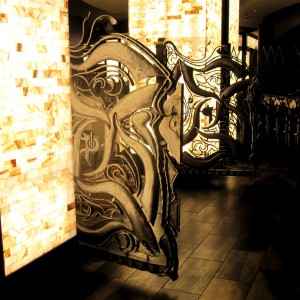
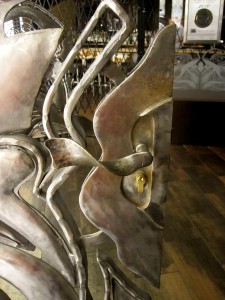


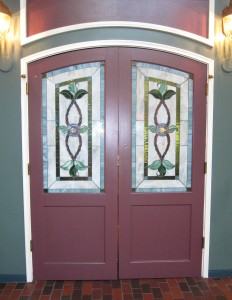

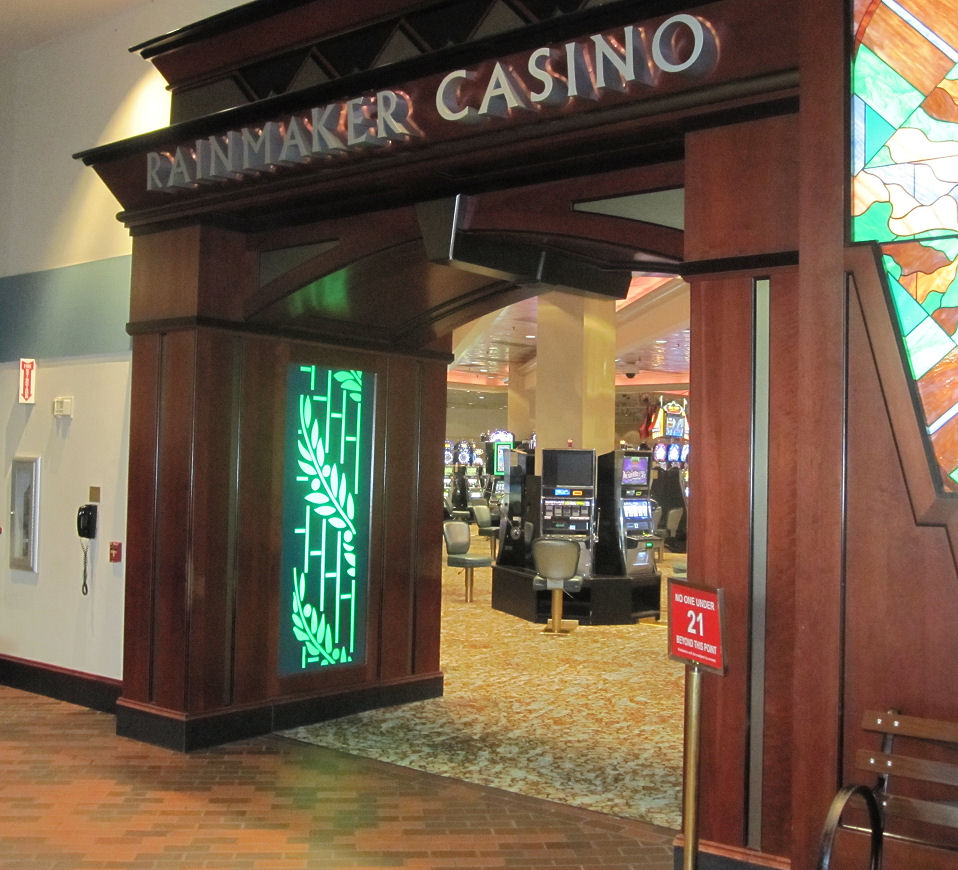
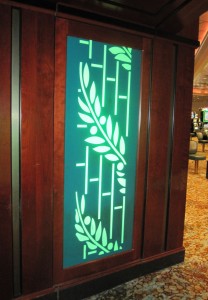
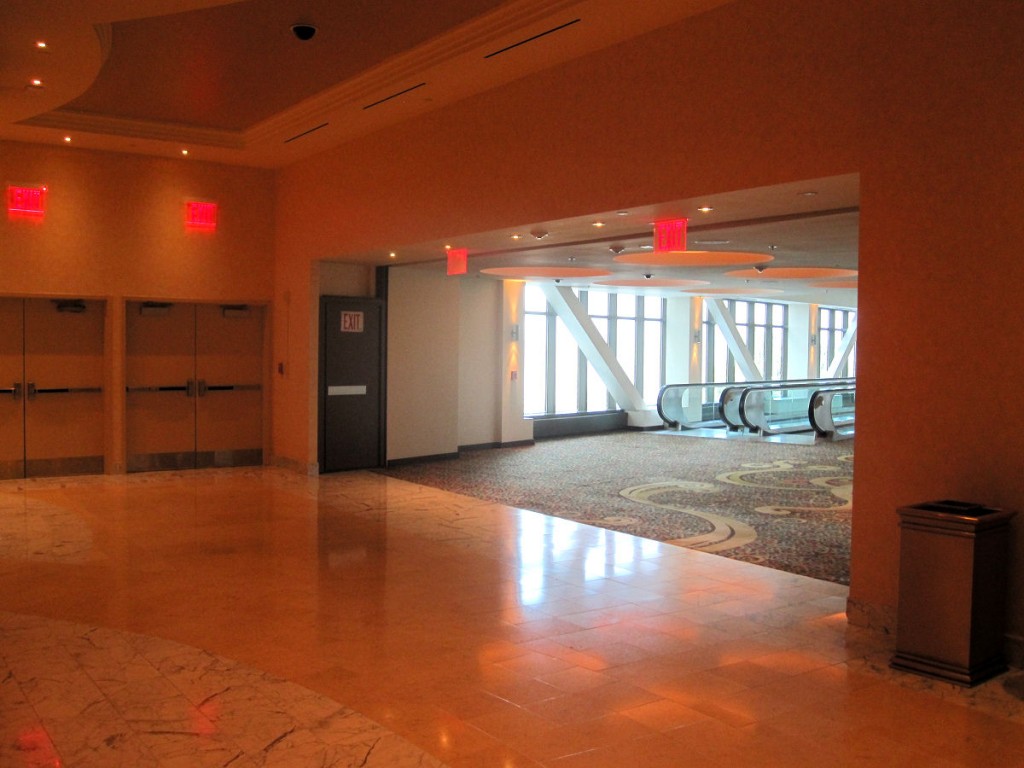

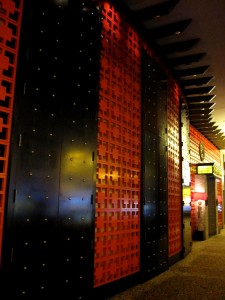
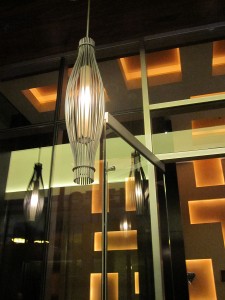
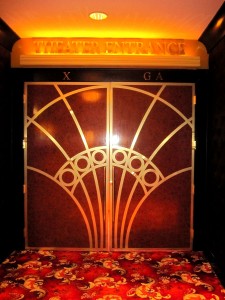

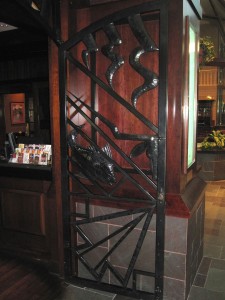
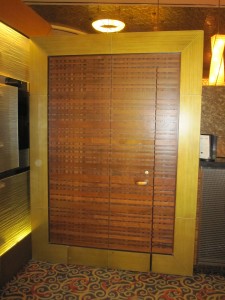

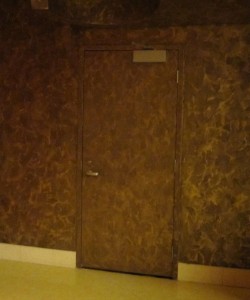

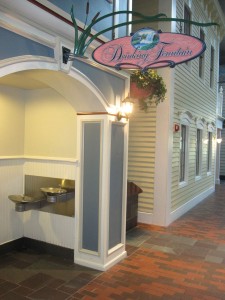
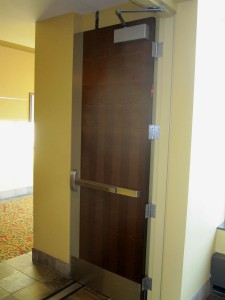
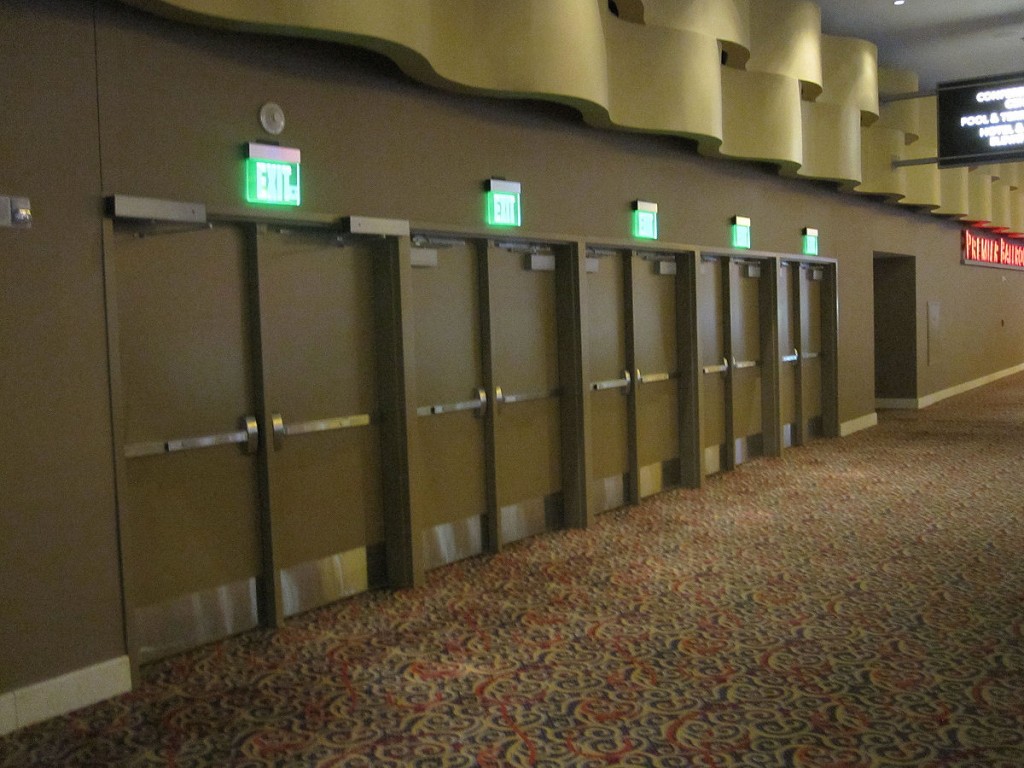




Lori,
Thank you for all your great photos, always! On your last egress photo from Foxwoods: why are the overhead operators different on the last pair of doors? What is the difference except for the obvious mounting?
Thank you !
Milena
Hi Milena!
I noticed the difference and wondered about this too. The other doors all have standard mechanical closers. The doors closest to me in the photo look like they have LCN 4410ME hold-open units, and the smoke detector mounted over the exit sign on this pair only would support that theory. These units would hold this pair of doors open, and would automatically close upon actuation of the fire alarm. I’m not sure under what circumstances they hold these doors open, but it could be for moving equipment. The doors were right next to the casino floor where there were LOTS of slot machines, so it’s possible that they move them in and out through these doors as needed for maintenance or replacement.
– Lori
Lori,
Firstly, thanks for what you do on this website. My co-worker Darren turned me on to it and I’ve enjoyed it just about every morning.
I have a comment on the doors that blend, specifically, the one with the closer on the wrong side. Your comment about base on the bottom of the door got me to thinking. In this instance, it looks like ceramic or marble base. While there’s no excuse for the closer (more on that in a minute), i wonder if the door is fire-rated and if that’s the reason for no base on the door. I’m sure manufacturer’s never tested with marble or ceramic base on the door…why the heck not!!!
As for the closer, i did a school with 4041 closers throughout. The GC installed every closer regular arm mount. He said, because he was behind on the job, it was faster that way since there are only two screws in each frame instead of 4 or 5. Whatever!
Hi Ken –
I’m glad you’re enjoying the blog!
I don’t think the door with the closer on the outside is rated, but let’s just hypothetically say that it is. I think the base would be considered a plant-on. Plant-ons are addressed in appendix E of NFPA 80: E.2 Plant-ons are usually decorative in nature and are used to impart a specific design or style. Plant-ons can be of various designs of flat material or can have a contoured shape, such as molding. Plant-ons project from the face surface of the door and are made of different materials, including wood, metals, and plastics. Plant-ons are attached to the door by a variety of methods such as adhesives, screws, nails, or other mechanical means that might penetrate the door face to achieve holding strength. Plant-ons can be attached per the manufacturer’s listing instructions. The use of plant-ons should not prohibit the installation of small signs indicating the function, use, or location of doors.
Manufacturers’ listings vary, so you’d need to research what a specific manufacturer allows, but Steelcraft’s procedures would allow the base as long as it is made of a noncombustible material, between 1/8″ and 1 1/4″ thick, and attached with approved tape. You can click here to read the paragraph from Steelcraft’s procedures if you want to check it out.
– Lori
And Ken…I forgot to address your comment about mounting the closers regular arm. I had never thought of doing that to save installation time. I have always wondered why they would put closers on the “wrong” side when the PA shoe is right in the box. I think you solved the mystery! Just one more reason to specify application-specific closers. 🙂
When we order frames, we only reinforce for a closer mounted on the correct side – saves us a little money instead of using a full or half sleeve. If we detailed a tri-pack closer, we make a note in the hardware schedule which side to mount the closer. If someone decides to mount them all regular arm, there could be problems down the road.
Good point, Bob!
I agree that installers cut corners. Not on my watch! The other is lack of education. The non-handed closer was a great invention it made things easier but it also caused issues like the one we are discussing. As spec writers there are not many options but as detailers we can instruct those willing to follow a detailed hardware schedule.
I always specify application-specific, handed closers unless the facility prefers something else. I’m sure you’ve looked at the parallel arm that comes with an application-specific closer (like the LCN 4111) vs. the separate adjustable arm and PA shoe that comes with a universal closer (like the LCN 4041). It’s a MUCH heavier arm, and the 4111 actually cost less the last time I checked. There’s a drawing of the two arms on this post: http://idighardware.com/2009/08/application-specific-vs-universal-closers/.
If application-specific closers are supplied, it makes it almost impossible for the installer to mount it on the wrong side of the door.
– Lori
There are 3 doors in the photos on Mag Hold Opens, is there a black and white answer as to which side of the door the closer it should be on? Typically I would coach installers to hide them the best way possible. What are your thoughts?
If a door is always held open, I put the closer on the pull side unless there’s some reason that I can’t. On the door with the edge channel, I would have used an LCN 4000T, which would be completely concealed behind the door when it’s open. I don’t recommend using that closer if the doors are kept closed at times (other than when they close on fire alarm). If a door is held open sometimes and kept closed sometimes, I ask the architect what they would prefer. My rule, as I’ve told my specwriters many times, is that if I’m debating with myself for more than 15 seconds (“hmmm…if I put it on the push side then it’s visible when the door’s open and the architect might not like that…but then if I put it on the pull side it’s got that perpendicular arm sticking out when the door’s closed…and I could use a concealed closer but the arm would still be visible when the door’s open, plus there’s always the coordination issue of what size to use…but I’m sure they wouldn’t want to see the floor plate for a floor closer…hmmm…”). I could think about it all day and I still wouldn’t know if the architect was going to like it. So it goes on the list.
I guess the rule of thumb is to hide them if the doors are always held open, and ask for the architect’s preference if they’re kept closed sometimes.
Hi Lori!
Thanks for the research and pics. I suspect delayed egress is more of an urban casino phenomenon. Here in Macau metal detectors are common at gaming area entrances too. It’s surprising because we have so little crime, but there’s a concern about someone grabbing a stack of chips and making a break for the nearest exit. If that exit is close to the public way, the bad guy has the edge in the foot race. I think someone grabbing a stack of chips at Foxwood would have a long way to run to get off the property.
There’s some good material on exit selection in emergencies on the Fire Safety Science Bibliographic Database. Researchers in Sweden confirm your observation that in familiar environments people tend to go out the way they came in. In unfamiliar environments signs become more important, and color of the sign makes a big difference. This research found green flashing green lights have the best result, and I would not be surprised if we see that in future editions of the IBC.
Thanks again,
Lloyd
I think you’re right Lloyd…at Foxwoods it’s a long way to anywhere!